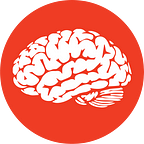There is no such thing as Artificial Intelligence!
Luc Julia, SVP Innovation Samsung Electronics
There is no such thing as Artificial Intelligence, Luc Julia, SVP Innovation Samsung Electronics
The AI officially started in 1956 at Dartmouth University, when some scientists began to try to model neurons with mathematics functions. Behind there was the idea that representing neurons, then a network of them would lead them to create an artificial brain. Nevertheless, it doesn’t work exactly like that, those scientists started with a false assumption. They didn’t create artificial intelligence (as they designated it), but they built augmented intelligence. In this perspective, with augmented intelligence as a tool to enhance ourselves (our intelligence), the beginning of AI was in 1642, when Blaise Pascal (1623–1662) invented the Pascaline, the first calculator. This device is bigger than us and never fails, but as humans, the chance to get complex calculation wrong is high.
Back in 1956, the scientists in Dartmouth wanted to solve natural language and failed, leading to the winter of AI. There is a risk of another one happening, considering people can be afraid of AI or disappointed.
In 1997, a machine (Deep Blue) beat a human in chess for the first time. However, this is not intelligence, but calculation and memory. Then with the internet, huge databases were created, leading to machine learning and deep learning. Let’s take the example of a cat recognizer: how many images of cats do we need as human to recognize them all the time, even in the dark or drawn by Picasso? Apparently, we only need two, whereas a machine needs about 100,000. This figure demonstrates that the technique used in AI has nothing to do with the one we use.
In 2014, a machine (AlphaGo) beat the human champion of go (which is a lot more complex game than chess). To do so, the machine consumed 440 kWh, while the human only consumed 20 Wh., which is 22,000 times less. In terms of energy, the current AI is not a sustainable method!
French:
L’intelligence artificielle n’existe pas, Luc Julia, cocréateur de Siri, Vice-Président de l’Innovation, chez Samsung Electronics.
L’IA a officiellement débuté en 1956 au sein de l’université de Dartmouth, lorsque des scientifiques ont tenté de modéliser les neurones avec des fonctions mathématiques. Il y avait alors l’idée sous-jacente selon laquelle représenter un réseau de neurones permettrait de créer un cerveau artificiel. Néanmoins, le cerveau humain en fonctionne pas comme cela, l’étude était basée sur une hypothèse erronée. Ces scientifiques n’ont pas créé d’intelligence artificielle (comme ils l’ont nommée), mais l’intelligence augmentée, c’est-à-dire un outil pour améliorer notre propre intelligence. Dans cette perspective, l’IA est apparue en 1642, lorsque Blaise Pascal (1623–1662) a inventé la Pascaline, la première calculatrice. Cet outil dépasse nos capacités puisqu’il ne peut échouer, contrairement à nous qui avons une probabilité assez élevée de se tromper en calcul, d’autant plus qu’il est complexe.
L’objectif des scientifiques de l’université de Dartmouth en 1956 était de décrypter le langage naturel, mais ils ont échoué, ce qui a mené à l’hiver de l’IA. Il y a un risque qu’un autre survienne aujourd’hui, lié à la peur ou à la déception du grand public concernant l’IA.
En 1997, une machine (Deep Blue) a battu l’homme aux échecs pour la première fois. Cependant, il ne s’agit pas d’intelligence, mais de mémoire et de calculs. Ensuite, avec Internet, d’immenses bases de données ont été créées, permettant l’apparition du machine learning et du deep learning. Prenons l’exemple de la reconnaissance de chats : combien d’images de chats avons-nous besoin en tant qu’humain pour reconnaitre un chat sans hésitation, même dans le noir ou peint par l’artiste cubiste Picasso ? Nous en aurions besoin que de deux, alors qu’une machine en a besoin d’environ 100 000, ce qui signifie que la méthode utilisée par l’IA n’est absolument pas celle que nous utilisons.
En 2014, une machine (AlphaGo) gagne contre le champion de jeu de go, jeu beaucoup plus complexe que les échecs. Pour cela, AlphaGo a consommé 440 kWh, alors que l’homme en face a seulement consommé 20 Wh, soit 22 000 fois moins. En termes de consommation d’énergie, l’IA actuelle n’est pas viable !
Les soi-disant machines intelligentes ne sont que des outils que nous contrôlons, qui fonctionnent grâce à des règles que nous rédigeons. Les boîtes noires n’existent pas dans les IA que nous avons, puisque nous pouvons toujours expliquer le résultat. Certes le programme choisit ses paramètres, mais nous devrions prendre le temps de retrouver le cheminement scientifique.
Published by, Bibin Ponnachan, Digital Marketing Strategist, Braincities Lab
